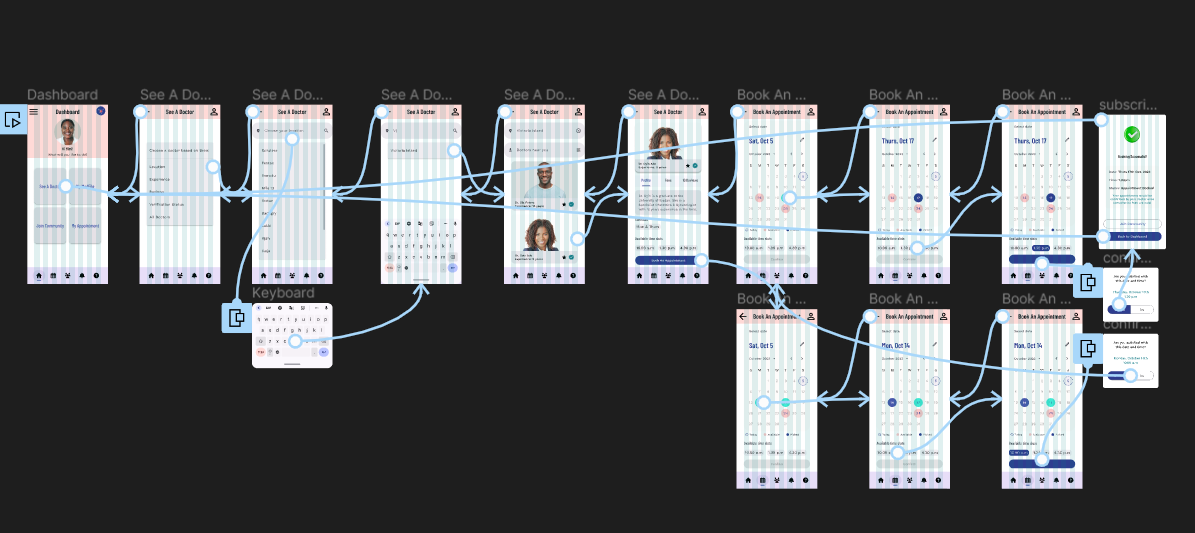
I went through four (4) phases of the design process within the 12 weeks.

Fibroids, benign growths in the uterus, negatively impact women’s well-being and fertility. To address this, a comprehensive solution was developed by examining the issue’s background and formulating a “How Might We” statement. The “5 W’s” approach explored who the stakeholders were, what their unmet needs were, when the problem occurred, where it was occurring, and why it was worth solving.

Many women are unaware of fibroids and their fertility implications until diagnosis, leading to treatment decisions influenced by stigma and a lack of supportive communities for those in similar situations. Diagnoses often occur when reproductive health symptoms arise, such as heavy menstruation, miscarriage, or difficulty conceiving.
In Africa, particularly in Nigeria, healthcare infrastructure challenges hinder women from choosing the right doctor and treatment. The reliance on testimonials and reviews underscores the importance of providing accurate information and connecting women with appropriate healthcare professionals for informed decision-making.

I interviewed four user categories to understand how to create and design the product. These categories were chosen based on their interaction with the problem.
I also researched and analyzed three direct and three indirect competitor apps to know how best to design the product solution.
Based on the results from the research, these were the key findings and insights:

I created two proto-personas and site maps for Patients and OB & GYNs to better grasp user needs, maintain alignment with their requirements, enhance app functionality, and gain insights into guiding users toward their objectives. This was particularly important to ensure that the product would be accessible, usable, and user-friendly.



As a solution, I created a digital product called Fibrocare which is a subscribers-based app that connects women with fibroids to healthcare professionals for fertility support and treatment.
I then developed task and user flows by focusing on core actions: “See A Doctor” for patients and “Confirm a Booking” for OB & GYNs, using proto-personas as a foundation. A custom style guide, influenced by medical digital products and incorporating Material Design 3, was created for consistency, clarity, and user-friendly design. Paper and digital wireframe sketches served as the basis for mid-fidelity versions, from which corresponding prototypes were generated.




I created a prototype where users subscribe after completing the entire process of selecting a doctor and choosing their preferred time and date. Based on my competitive analysis, I believed this approach was likely to incentivize users to subscribe.
User testing feedback fortunately challenged my initial assumption, prompting iterative improvements for an enhanced user experience. Users expressed discomfort and dissatisfaction with the undisclosed subscription requirement for accessing doctor appointments, feeling misled into committing to what they thought was a free service. I incorporated these insights into high-fidelity screens, following the design guide.



With only 2 users completing their task, this was obviously a fail and I used the insights from this testing to improve the flow.
I omitted subscription to test the task independently with users.





I reinstated the subscription step as the first mandatory requirement before users can "See A Doctor," necessitating subscription prior to scheduling an appointment.



Many women with fibroids still experience shame and fear sharing their stories. As a medical project, ethical, legal, and medical considerations must be incorporated into the design process.
I plan to continue this initiative by iteratively developing wireframes and prototypes for both patients and OB & GYNs, enhancing the flow with additional functionality, and exploring funding opportunities for further development.